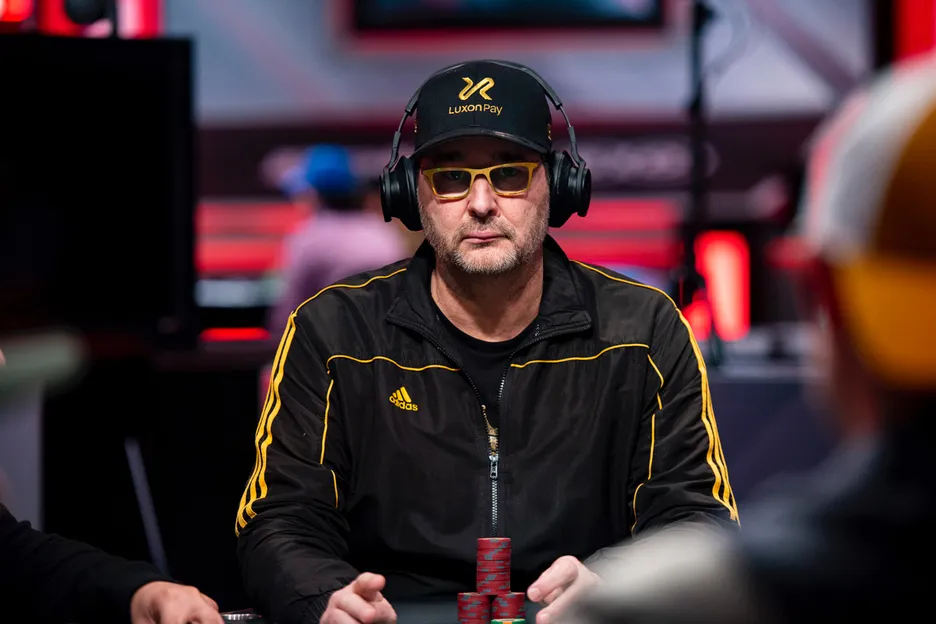
Top Five WSOP Tournaments with Biggest Prize Pools
When researching the largest tournament prize pools in the history of poker, it is no surprise to discover that they all happened at the World Series of Poker. Further, they were all WSOP Main Events.
The WSOP Main Event has experienced almost consistent growth throughout its history. It started with seven players in 1970 and six the following year, and then increasing to eight, 13, 16, 21, 22, 34, 42, and 54 through the 1970s. By 1989, the WSOP Main Event was closing in on 200 players, and the number surpassed 500 by the year 2000. After Chris Moneymaker won in 2003, the exponential increases began:
- 2003 = 839 players
- 2004 = 2,576 players
- 2005 = 5,619 players
- 2006 = 8,773 players
The 2007 Main Event still drew 6,358 players but fell after the Unlawful Internet Gambling Enforcement Act (UIGEA) that Congress passed in late 2006. The numbers steadily climbed again, up to 7,319 in 2010, but a downswing took place moving forward after Black Friday. With PokerStars out of the US market and Full Tilt and Absolute/UltimateBet gone from the landscape altogether, numbers were somewhat stagnant until they rose again in 2017.
The 2019 Main Event brought in 8,569 players, just missing the all-time record set in 2006. And then the pandemic hit. The 2020 tournament had to be played mostly online, and the combined field online was only a portion of its former glory. The return of the WSOP after Covid lockdowns saw the number of entrants back to 6,650 in 2021 and up to 8,663 in 2022.
A significant effort to qualify more players in 2023 set a new record. And that Main Event became the largest prize pool in all of poker history.
Top Five Prize Pools in WSOP History
Let’s look at the five largest tournament prize pools from the fifty-plus years of World Series of Poker history, starting with the fifth-largest.
5th Largest: $74,015,000 in 2018
The 2018 World Series of Poker showed much promise. It was seven years after Black Friday, and though the US online poker market had yet to recover, it did provide a few options for players. At the same time, offshore sites like ACR Poker (then Americas Cardroom) were attracting players in record numbers. Everyone was settling in to the new normal in the poker world.
That summer’s WSOP brought in big numbers, such as more 13,070 entries for the Colossus event. Several players won two bracelets – Shaun Deeb, Joe Cada, Justin Bonomo, and Michael Addamo – while Phil Hellmuth and Shaun Deeb added to their sizeable collections of WSOP gold jewelry. Justin Bonomo won the Big One for One Drop for a cool $10M, and Chris Ferguson accumulated the most cashes.
The Main Event that year had three starting flights and brought in 7,874 players. The resulting prize pool was $74,015,600, out of which the top 1,182 players received payouts. Former champion Joe Cada made the final table but finished fifth. And in the end, John Cynn defeated Tony Miles to win the championship bracelet and $8.8M.
4th Largest: $80,548,600 in 2019
For the 50th anniversary of the World Series of Poker, the organizers increased the number of bracelet events to 90. And the celebratory Big 50 tournament brought in more than 28K entries for a $500 buy-in event. The Colossus topped the previous year with 13,109 entries.
Chris Ferguson and Daniel Negreanu tied for the most cashes for the year, while Robert Campbell picked up two gold bracelets and won the Player of the Year award.
That year’s Main Event attracted 8,569 players, creating a prize pool of $80,548,600. The top 1,286 players received at least $15K for their efforts in the world’s largest tournament, but everyone at the final table took home a minimum of $1M. In the end, poker media member Garry Gates bowed out in fourth place, longtime pro Alex Livingston took third, and Hossein Ensan defeated Dario Sammartino to win the $10M first-place prize and bracelet. Sammartino still earned $6M.
3rd Largest: $80,782,475 in 2022
One of the most positive years for the World Series of Poker was 2022, in the form of positive changes. The pandemic was mostly in the rearview mirror. The series finally moved from the Rio after 17 years and landed on the Las Vegas Strip. The WSOP set up at Bally’s Las Vegas (now Horseshoe Las Vegas) and Paris Las Vegas, two casinos that connected indoors and provided two convention areas for poker. Players were excited for all of it, and it showed in the attendance.
Out of 88 tournaments, the Housewarming was the official welcome event and attracted more than 20K entries. The Colossus brought in 13,565 entries, and the Million Dollar Bounty tournament with a $1K buy-in attracted 14,112 entries. Dan Zack and Lawrence Brandt each won two bracelets.
The Main Event was a stunner, as the 8,663 player count came very close to beating the 2006 record. The prize pool soared to $80,782,475, enough to pay out the top 1,300 players. (Technically, they paid the top 1,302 players, with three of them splitting the $15K min-cash.) The playdown to the final table was exciting, as Effy Litsou made it to 18th place and longtime pro Kenny Tran to 17th. The final table itself was an international one, featuring players from the USA, Canada, England, Croatia, Australia, and Norway. In the end, Espen Jorstad of Norway won the tournament, bracelet, and $10M.
2nd Largest: $82,512,162 in 2006
The 2006 World Series of Poker happened at the height of the poker boom. In the nearly three years that passed since Chris Moneymaker won the WSOP Main Event, people had been flocking to online poker sites around the world, winning their way to the World Series, and checking out the WSOP for the first time. It was a summer of all things poker.
There were 45 events on the schedule, all at the Rio All-Suite Hotel and Casino instead of Binion’s. There was the first-ever $50K buy-in HORSE event won by Chip Reese, and that turned into the now-annual Poker Players Championship. Players like Sam Farha, David Williams, Dutch Boyd, Lee Watkinson, Allen Cunningham, Max Pescatori, Phil Hellmuth, John Gale, and David Pham won bracelets that summer, while Bill Chen and Jeff Madsen each won two events.
The Main Event brought in a jaw-dropping 8.773 players, creating a prize pool of $82,512,162. The last 873 players standing received payouts, and the last few tables included names like Humberto Brenes, Eric Lynch, Kevin O’Donnell, Prahlad Friedman, David Einhorn, and Jeff Lisandro. The final table was full of character and action, with Jamie Gold leading the way to victory and a $12M prize.
Largest Prize Pool in WSOP History: $93,399,900 in 2023
World Series of Poker executives wanted to beat the 2006 number. They had come close in previous years, but they wanted to set a new high bar. They ran satellites online on GGPoker and WSOP.com, and they launched Main Event Maynia to offer step satellites at live casinos around the US and the world. The WSOP took its overwhelmingly positive reactions to the move to the Las Vegas Strip to improve on that in 2023, and they put 95 events on the summer schedule to see what happened.
Players responded…in huge numbers. The Mystery Millions brought in 18,188 entries, the Gladiators delivered with 23,088 entries, Millionaire Maker with 10,416, and Colossus with 15,894 entries. The Seniors had 8,180 and Ladies had 1,295, both setting records. Several players – Josh Arieh, Ryan Miller, Chad Eveslage, and Chris Brewer – each won two bracelets, while Phil Hellmuth won his 17th and Ian Matakis became the Player of the Year for both online and live success.
That goal for the WSOP Main Event was not only achieved but surpassed, as there were 10,043 players who signed up for the $10K buy-in event. That created a prize pool of $93,399,900 and paid out the top 1,506 players. The final table started with international representation – Italy, England, Spain, Scotland, Germany, Ukraine, and the USA, though the final three players were all Americans. Dan Weinman outlasted the others and collected $12.1M for his victory.
